Punjabi weddings are colourful, boisterous, and frequently extravagant affairs with countless opportunities to sing and dance one’s heart out.
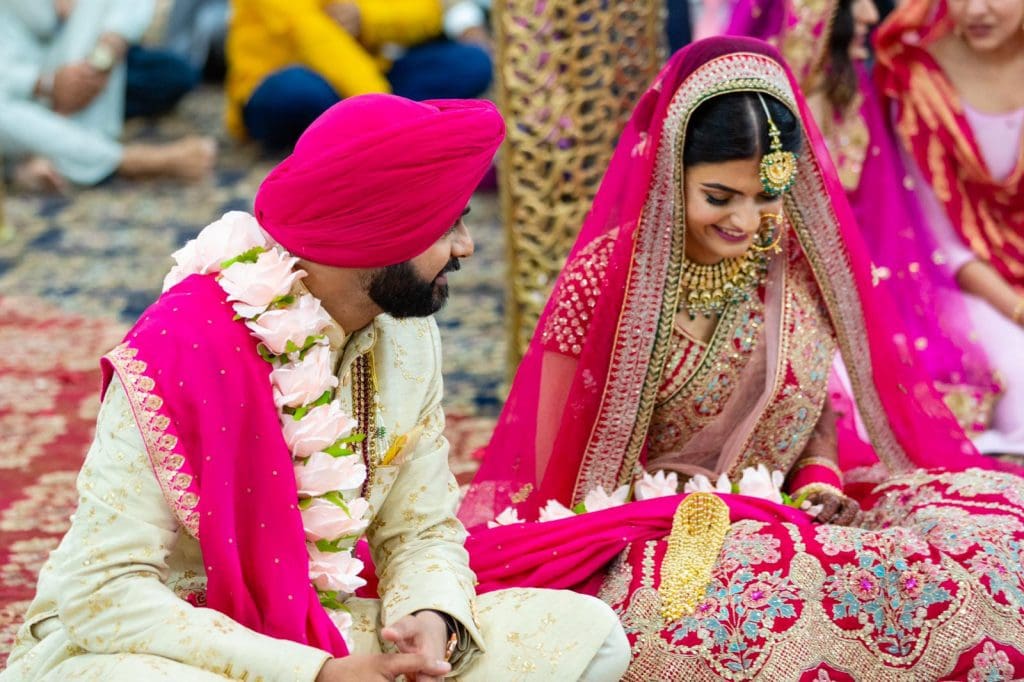
Punjabi weddings can be simple or extravagant, but they always guarantee a lot of fun and celebration.
A Punjabi wedding is a long and delightful occasion due to several pre-and post-wedding customs.
We share Punjabi wedding rituals step by step:
Pre-Wedding Rituals
Roka and Thaka
The name ‘Roka’ is derived from the word ‘Rokna,’ which signifies that the bride and groom can now cease exploring other wedding prospects and are committed to each other. ‘Thaka’ is a ceremony in which the pair is required to sit together, given gifts or Shagun and formally engaged.
The ‘Sagan’ ritual is usually conducted a few days before the wedding day. The bride’s family invite their relatives and friends over to their home where they perform songs and dances. Gifts are also exchanged between both families during this time.
‘Rokka’ and ‘Thaka’, mark the official engagement of the couple and usually takes place at the bride’s home. During this ritual, gifts are exchanged by the families, and the couple’s hands are tied together with a string.
Chunni Ceremony
Members of the groom’s family bring jewellery, gifts, sweets, and a red-coloured dress, such as a saree or lehenga-choli, as well as a red chunni or chunri, to the bride’s home. The bride’s chunni is draped over her head in a ceremony known as chunni chadana.
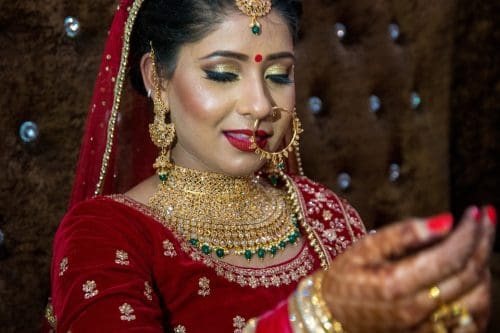
Mangni
This ceremony signifies the couple’s official engagement. This is usually a spectacular ceremony that takes place before the wedding. The bride’s hands, arms and feet are decorated with intricate designs of henna paste. The design is known as the mehndi.
It is believed that the darker the colour of the mehndi on the bride’s hands, the more her husband will love her. On the day before the wedding ceremony, a mehndi artist is hired to create the mehndi designs. After the application of mehndi, the bride and her friends gather around the henna bowl with a cloth.
The bride’s family members then apply oil and turmeric paste on her hands, arms and feet. This is believed to bring good luck and long-lasting love. Later, the bride’s friends and family members dance to celebratory music while others sing traditional Punjabi songs.
The groom’s family feeds the bride cooked rice and milk. The pair exchange rings in a joyous atmosphere.
Mehendi
On the day before the wedding, the bride and groom’s families gather at their respective homes. The ‘Mehndi’ ceremony takes place when both sides of the family enjoy henna designs on their hands. The mehendi ritual is a must-do for any traditional Indian bride, and it is an integral element of the wedding festivities. The bride has henna painted on her hands and feet, and she normally goes to great lengths to choose the nicest and most personalised patterns.
Sangeet
After the mehendi, the sangeet ceremony is held a day before the wedding and usually takes place in the bride’s home. Sometimes it is held on the same day. In certain circumstances, it takes place on a different day entirely.
The families of both the bride and groom come together to celebrate with traditional music, singing and dancing. Both sides of the family participate in performances dedicated to the couple. The event usually consists of joyful songs, dances, and recitation of poetry, in which both sides of the family members take part. During the sangeet, it is customary for the bride or groom’s family to give gifts to their relatives as a token of appreciation. This custom helps strengthen ties between them and their families.
Wedding Day Rituals
Kangana Bandhna Ceremony
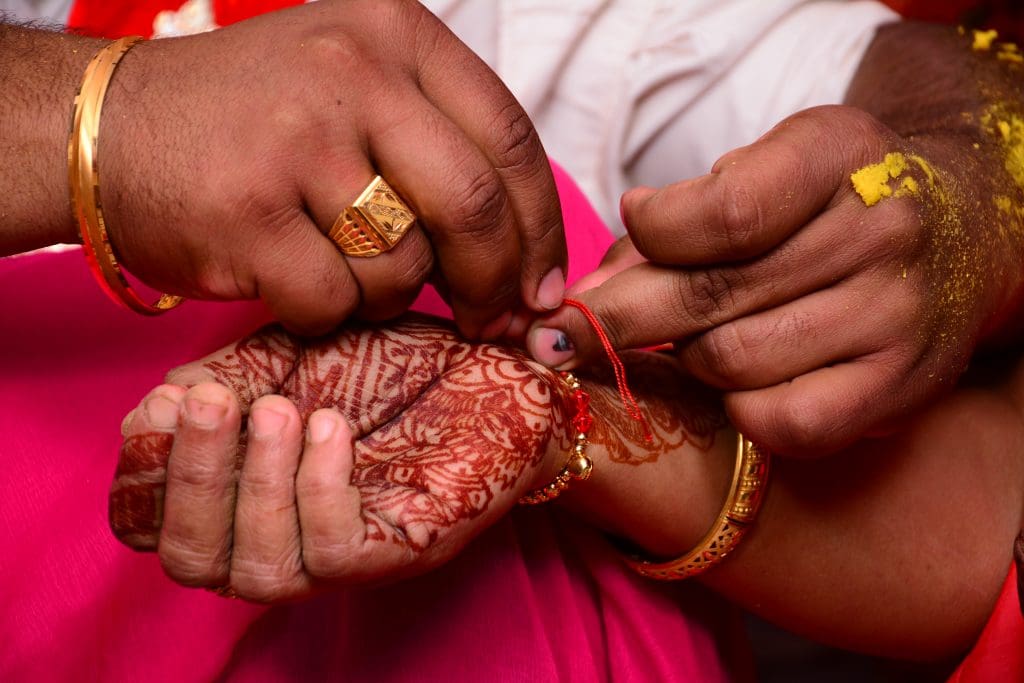
On the morning of the wedding, this ritual takes place. In their own houses, the bride and groom tie a mouli, or sacred thread, on their hands. It is thought to be a good luck charm for warding off evil.
Chooda Chadana
The ‘Chuda’ ritual is yet another pre-wedding custom which is conducted by a priest in front of close family and friends. The bride’s maternal uncle presents her with a set of red and white bangles, which she wears for the following week as a sign that she is married.
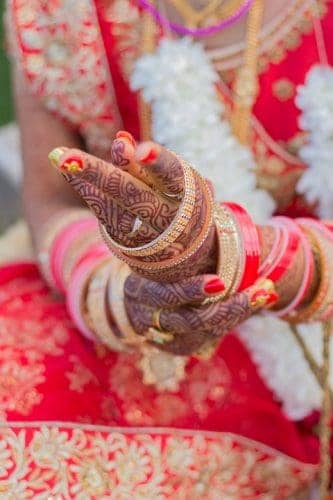
The Chooda is a collection of bangles made of red and ivory, usually in multiples of four. An important role is played by the bride’s eldest maternal uncle during the wedding ceremony. The bride’s head and face are covered during the ceremony because she is not allowed to see the chooda until her wedding day.
The bride’s sister-in-law, friends, and sisters then bind the Kalire on her wrist or one of her bangles.
Haldi or Vatna ceremony
The ‘Vatna’ ceremony marks the end of pre-wedding rituals where the bride’s family applies a paste made out of turmeric and sandalwood to the bride’s skin. This is done as a cleansing and beautifying ritual.
Sandalwood, turmeric, rosewater, and mustard oil are combined to make a paste. The married ladies of the household apply this paste to the bride’s entire body, particularly her face, hands, and feet. The light from the diyas is said to give the bride an eternal glow. At the groom’s residence, the same ceremony is held.
Sehrabandi
Sehrabandi is an important pre-wedding ritual in a Punjabi wedding, which typically happens on the morning of the wedding day. It involves putting tikka (red vermillion) on the forehead of the groom by his sister-in-law or any female relative.
The groom wears a sherwani and churidar for his wedding. After that, a little puja is done in his honour. Throughout this puja, the priest sanctifies the turban and the Sehra. An elder male member of the family or the groom’s brother-in-law ties the turban and the Sehra around the groom’s head.
Ghodi Sajana and Ghodi Chadhna
Ghodi Sajana and Ghodi Chadhna are two more important rituals in a Punjabi wedding. In the Ghodi Sajana ceremony, the groom rides a decorated white horse to his bride’s residence, accompanied by male relatives and friends. There, he is welcomed with traditional music and flowers by the bride’s family.
The Punjabi groom rides a horse to the wedding venue, as is customary. The horse is adorned with ornate ornaments and has tika affixed on its head. He is then joined by members of his family, who accompany him to the wedding destination. The wedding journey is accompanied by a band that plays upbeat songs, to which the wedding procession members dance.
Varmala
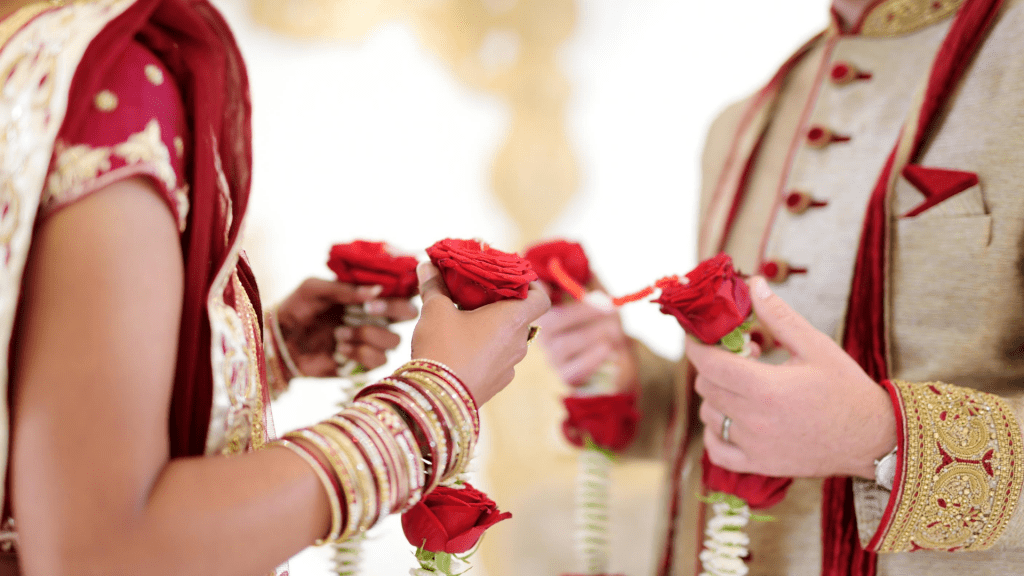
Varmala is performed in which the bride and groom exchange garlands to signify their acceptance of each other. When the groom enters the wedding hall, he is taken to the stage and placed on a little pedestal. The bride arrives on stage at the appointed muhurat, and the pair exchanges garlands.
This is an enjoyable ceremony in which the two sides compete to elevate one of the bridesmaids or groomsmen higher so that the other cannot place the garland over his or her head.
Kanyadaan
Kanyadan is a ceremony during which the father of the bride gives away her hand in marriage to the groom. It marks the completion of rituals before the actual marriage takes place. This is a really emotional and moving wedding ceremony. The groom’s father places his daughter’s hand in his and requests that he nurtures her with love, care, attention, and respect.
Phere
The final ritual of a Punjabi wedding is the Phere ceremony, which is when the bride and groom take seven rounds of the holy fire while taking their vows, chanting the mantras and vows as incanted by the holy priest. The pheras can also be taken around the holy book (Guru Granth Sahib) if the marriage is being performed in a Gurdwara. This symbolizes that they are tying the knot and committing to each other for life.
After the Kanyadan ceremony, the couple rises. The edges of their dupattas are then twisted in a knot and wrapped four times around the sacred fire. The bride accompanies the groom for the first three pheras, and she must follow the groom for the last phera. The couple must go seven times around the sacred fire. Round after round is symbolic, and the pair is expected to accept a vow toward their wedded life with each vow, as the priest recites mantras.
Sindoor Daan
Sindoor Daan is a ritual that marks the start of a union between two individuals. In this ritual, the groom applies indoor (vermillion) to the parting in the bride’s hair and blesses her. This signifies that they are now husband and wife.
Joota Chhupai
It is usually followed by the Joota Chhupai ceremony, where while the groom is engaged in the wedding ceremony, the bride’s sister/sisters hide his shoes and later demand a ransom if he wants them back. The groom and his family then try to find the shoes, often offering gifts or money in exchange for them.
Everything is done in good humour and in jest. They eventually come to an agreement after much haggling between the two parties, and the groom pays a specific amount for his shoes. Once they are found, the wedding is complete and the couple can now begin their married life
Post-Wedding Rituals
Vidaai
The wedding ceremony’s most heartbreaking phase. The bride must say her goodbyes to her family and ‘maayka.’ She throws a handful of rice over her shoulder in the direction of her family, thanking them for raising her and caring for her. She gets into her groom’s car and drives away to her new home.
Mooh Dikhai Ki Rasm
First and foremost, the family asks for blessings from the deities who live in the dwelling. As a result, the bride sits in front of her family and friends, her veil lifted so that everyone may see her face. The elders then present her with gifts, cash, and jewellery.
Reception
In honour of the newlyweds, the groom’s family throws a magnificent reception party. A Punjabi reception is a joyous celebration, complete with delectable food and lively music. The event usually takes place in a grand hall or banquet facility, and can involve hundreds of guests.
Traditionally, the bride and groom will enter the hall with great fanfare and be accompanied by their family, who shower them with rose petals and other traditional gifts. A grand feast is then served, with traditional delicacies such as tandoori chicken, Amritsari fish, kadhi pakora, and various curries.
Music and dancing are common at the reception, often featuring a live band playing Punjabi songs. At the night’s end, the groom’s family will typically offer gifts to family members and friends in attendance. It is not uncommon for the bride’s family to also shower her with gifts, as a symbol of their love and appreciation. Punjabi wedding receptions are an important part of the overall wedding experience and can be a very enjoyable celebration for all involved.
Wedding Attires
Punjabi groom – what to wear
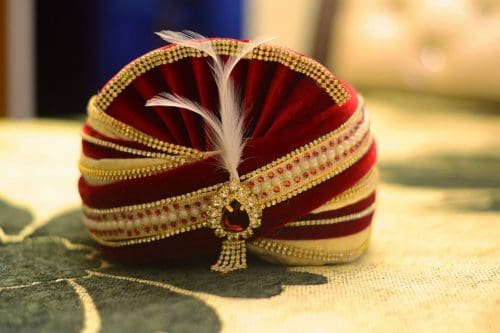
The Punjabi groom may choose to wear traditional Punjabi attire namely, a Churidar and Kurta or a Sherwani. The preferred hues are cream or off-white, with a lot of zari threadwork, beading, and stone adornment. He wears the sherwani with a complementary colour pyjama or churidar. He wears a dupatta over his neck as well.
The groom is often gifted a special ornamental turban known as the ‘Safa’, which is usually decorated with jewels.
He wears a Sehra headpiece with dangling flower strands, colourful ribbons, and even pearl strings that cover his face. The top of the Sehra is fastened behind the groom’s head and wrapped around his forehead.
Jewellery for the groom usually includes a long necklace, called the ‘Haar’, and often an ornament for his turban. Punjabi grooms are also known to make fashion statements with colourful turbans and shoes. The groom is expected to dress in shades of red or pink for traditional weddings as these colours symbolize joy and happiness.
As far as footwear goes, the groom is likely to choose a pair of Juttis, which is a type of traditional shoe or more modern loafers.
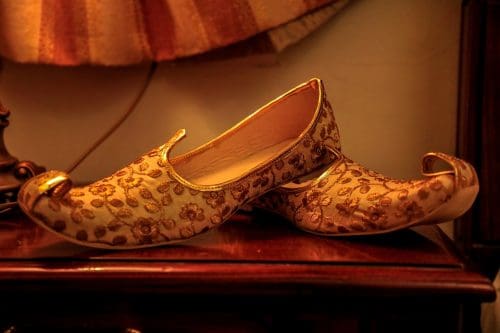
Punjabi bride – what to wear
The Punjabi bride walks in elegance, adorned with a stunning lehenga and a plethora of stylish jewellery. The bride often selects a red lehenga, heavily embellished with intricate designs such as zari embroidery, dabka, and stones. The lehenga is matched with a glamorous dupatta to keep her head covered.
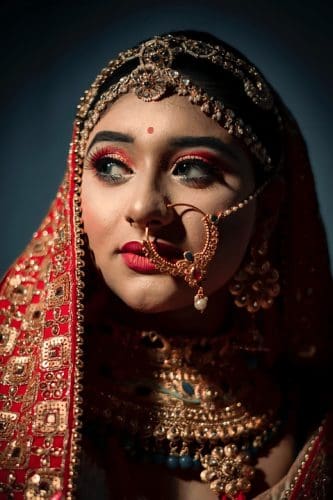
The skirt of the lehenga is usually wide, and it is worn with a matching choli. Despite the fact that red is the traditional wedding colour for all Indian women, Punjabi brides are known to like colours such as green, gold, fuchsia, and orange.
A Punjabi bride’s jewellery typically consists of heavy gold sets. She has a lot of jewellery on her, some of which is gold and some of which is modern costume jewellery. Maangtika, bangles, Nath, Chooda, Kamar bandh, and Paijaniya are all required to be worn.
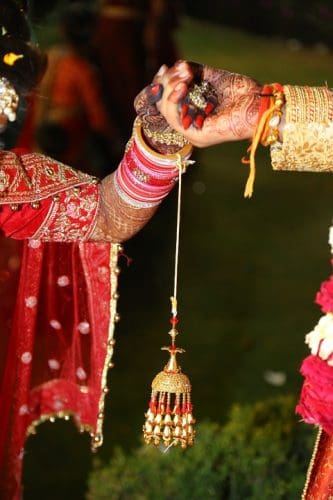
The bride also wears a Kalire on her wrists as part of the traditional attire. The bride’s sister-in-law puts the pair of Kalire around her wrists. These are dome-shaped gold or silver decorations with many danglers connected to them. To complete the look, the bride wears a bindi and applies mehendi or henna tattoos to her hands and feet.
Food
The food display is the part of the Punjabi wedding that attracts the most attention from the guests. Any Punjabi wedding after the rituals is essentially about ‘eat, drink, and dance.’
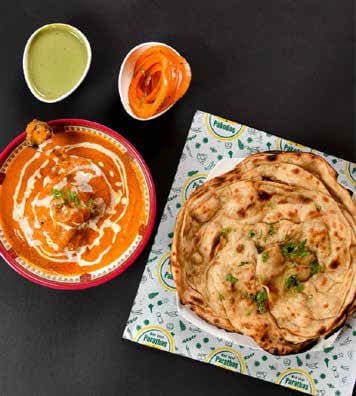
- The chargrilled paneer and chicken tikka are primarily seen at the appetiser stations. Before grilling, it is marinated in a mixture of spicy and acidic flavours and has a smokey scent.
- Tandoori chicken, the Punjabi version of chicken wings, has a mouthwatering flavour that will make you drool. They’re made with frozen yoghurt that’s been combined with all kinds of Indian spices and then grilled before being presented in platters.
- Each bite of Amritsari Fish Tikka melts in your mouth, lulling you into a culinary coma you won’t want to wake up from. It’s marinated in smoky and spicy flavours to make you want to lick your fingers.
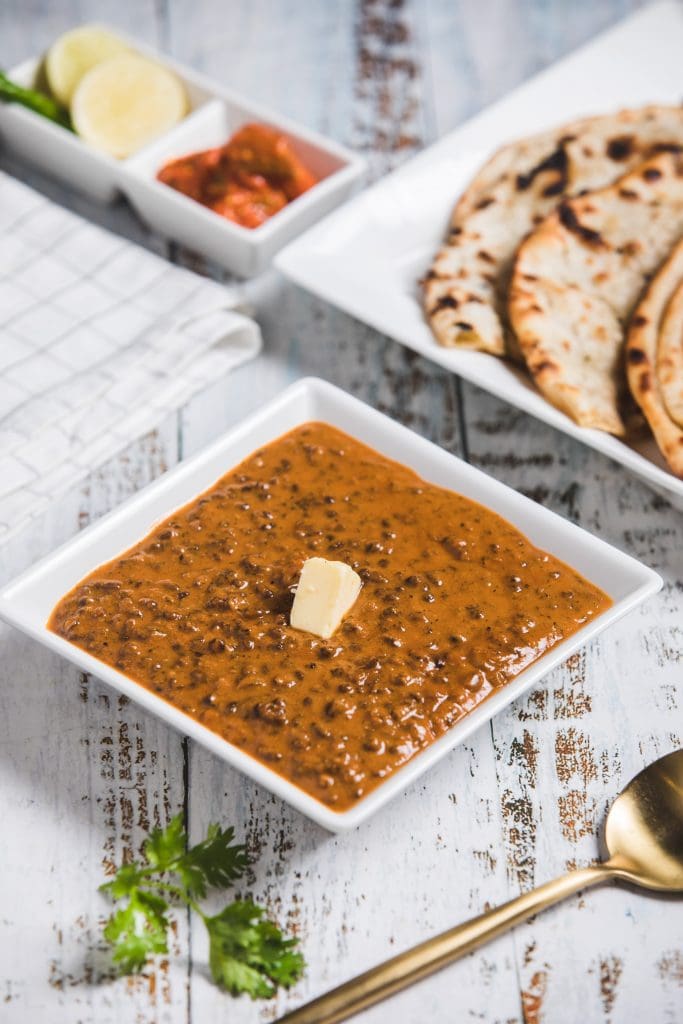
- Butter Paneer or Chicken, a popular Punjabi cuisine that is a must-try, cannot be ignored because it is a real enticement. Its buttery texture is blended and cooked to perfection with onions, tomatoes, garlic, green chilli, and dry herbs. It’s usually served with rice or naan bread.
- Mustard leaves and cornflour bread are used to make Sarson Saag and Makkai Roti, a delicious dinner. This mini-meal is made with a blend of wonderful Indian spices.
- The Amritsari Kulcha is a Tandoor-cooked stuffed Indian wheat bread. The filling consists primarily of onions, potatoes, chillies, and coriander, all of which have mild flavours.
- Lassi is a chilled, sweet drink made from thick, fresh yoghurt. It’s topped with churned cream and dried fruits, and it’ll satisfy your soft drink cravings.
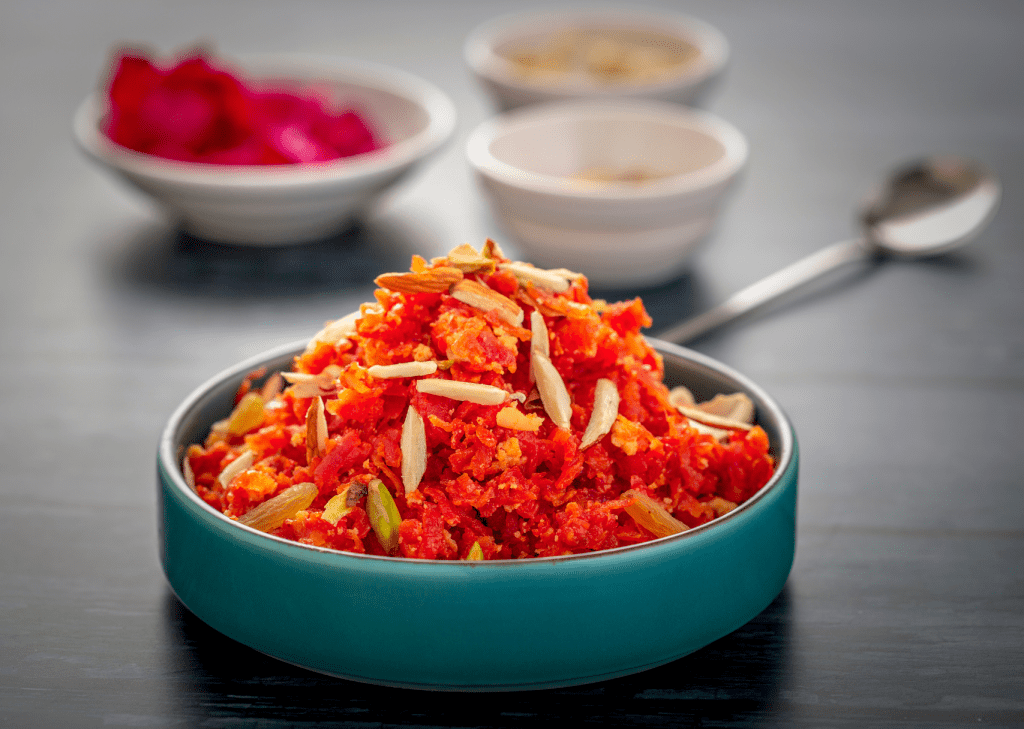
- Dahi Bhalla, a sweet and spicy complement, is a must-have with every meal to bring out the flavours of the other meals. For flavour, they’re garnished with mint and tamarind chutney.
Read More: Latest



